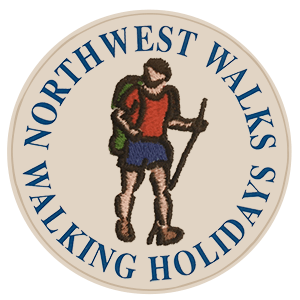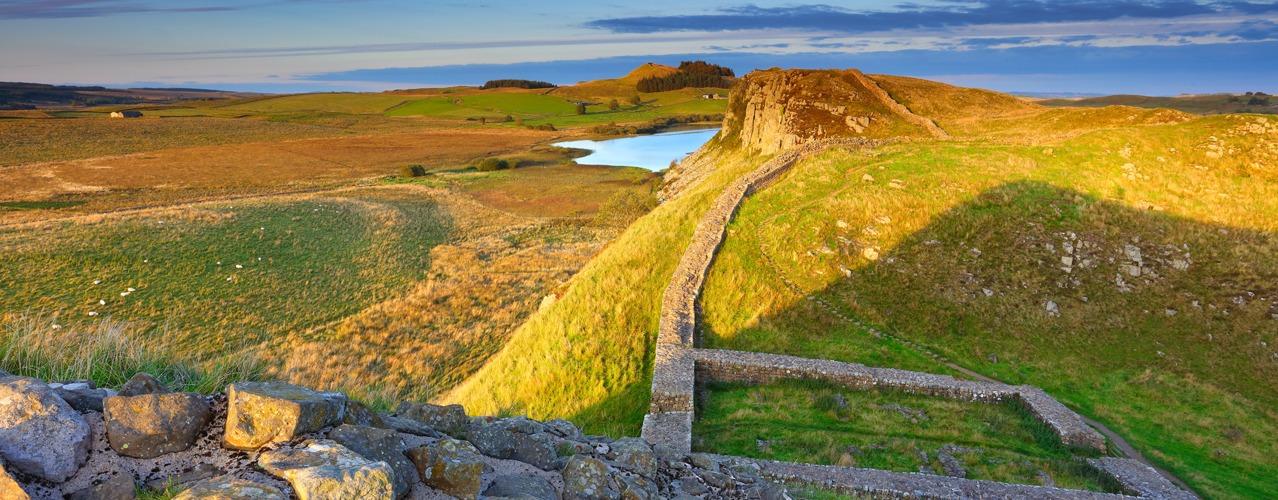Route Description
Hadrians Wall Path is an 84 mile linear route that follows the worlds finest surviving Roman frontier from Wallsend, near Newcastle to Bowness-on-Solway, near Carlisle. The path runs almost coast to coast across the narrow isthmus at the top of England. The idea to create the Wall, and prevent the attacks and movements of the Celtic Barbarians from the North (Scotland), was that of Roman Emperor Hadrian Aelius. In AD122 work commenced on the near ten year task to build the Wall and its forts, milecastles and turrets. Fifteen thousand men from 3 Roman Legions were employed in the task. The following is intended to provide further information about the route. Please note that all distances and heights in this document are approximate and along with all the other information are provided as an aid to describe the route.
Terrain
Generally the path follows a grassland route with paved and tarmac sections, but rocky paths will be encountered in the Pennine mid section of the route.
Waymarking
The route is sensibly waymarked and generally easy to follow with the aid of a map and guidebook.
Wallsend (height above sea level 5m) to Wylam (10m)/Heddon-on-the-Wall (120m).
The start of Hadrian’s Wall Path is in Wallsend, Newcastle at the remains of Segedunum Roman Fort. Not since the end of the Roman occupation of Britain, some 1600 years ago, has it been possible to walk along the entire length of Hadrian's Wall. The first section of the route from Wallsend to Chollerford is generally easy walking. From the fort the route follows alongside the River Tyne, passing the shipyards and Newcastle’s industrial centre for the first several miles. The route leads through Newcastle Quayside, a vibrant area with restaurants and cafes. The bridges, including the tilting Millennium Bridge ('Winking Eye Bridge') link Newcastle to Gateshead. Continuing to follow the direction of the river the route passes Newburn (5m). In a few miles the route meets the Wylam Waggonway. Hadrian’s Wall path turns right away from the river to Heddon-on-the-Wall, a short walk across farmland, but continuing along the Waggonway for a short distance brings you to Wylam birthplace of George Stephenson. At Heddon-on-the-Wall is the first section of the Wall and evidence of Roman construction.
Wylam (10m)/Heddon-on-the-Wall (120m) to Chollerford (100m).
From Heddon-on-the-Wall the path leads into the countryside and continues its way over mainly level terrain alongside the line of the old military road, where the Wall once stood. To the north side of the road you will see the ditch in places and the occasional ridge in the fields to the south. Today the B6318 road is dubbed the military road, not on account of the Romans, rather General Wade, builder of military supply roads in the 18th century in response to the Jacobite rebellion. The route is almost straight and passes the hamlets of Wallhouses and Halton Red House. At the junction with the A68 road is Portgate (200m), which was the junction with the Wall and Dere Street, the main Roman road into Scotland. The historical market town of Corbridge is a few miles to the south of the path. The path passes St. Oswald’s Church at Heavenfield (220m), the site of a 7th century battle between Northumbrian forces and an invading Welsh army. The battle was a decisive victory for Oswald, King of Northumbria. The 97 mile St. Oswald’s Way long distance walking route leads from Holy Island to Heavenfield, and Hadrian’s Wall path and St Oswald’s Way have been following the same path for the last few miles. The route leads Chollerford, here are the ruins of Chesters Roman Fort and Chesters Museum, open daily from April to September.
Chollerford (100m) to Steel Rigg (280m).
On this stage there are the most complete sections of the Wall, forts, milecastles, turret sections and wonderful views as the Wall crosses the Pennine Hills. The path continues to follow the line of the military road for several miles and climbs gradually as it ascends into the Pennine’s. The path passes Limestone Corner, the most northerly point of the Wall. Near milecastle 34 (250m) the road turns away from Hadrian’s Wall and the Wall crosses the rough and rugged landscape of the Pennine Hills. The Wall was built on a line of rocky Crags which created a high defence to potential invaders from the north. There are excellent views of the surrounding area and Northumberland National park. For the next several miles the path rises and falls as it crosses the Crags, passing Housesteads Fort (275m) on route to Steel Rigg. Approximately 2 miles from this point is Vindolanda Fort, both Vindolanda and Housesteads are open daily from April to September.
Steel Rigg (280m) to Gilsland (130m).
For the next few miles Hadrian’s Wall Path continues its route over the Crags alongside good sections of the Wall. The path reaches its highest point at Windshields Crags (345m). There isn't very much between yourself and the Shetlands, a wasteland occupied by ‘The Barbarians’, or so the Romans called them, two millennia ago. This section of the path is also shared for a few miles by 268 mile Pennine Way long distance National Trail, an upland walking route which leads from Edale in Derbyshire to Kirk Yetholm in the Scottish Borders. At Walltown Crags there are views of southern Scotland and the Northern Pennines, and in the distance the Solway Firth. The landscape changes and the path crosses into Cumbria and over farmland to the village of Gilsland (130m).
Gilsland (130m) to Carlisle (15m).
A mile from Gilsland is Birdoswald Fort (open daily from April to September). Hadrian’s Wall path now continues across farmland to the hamlet of Banks (120m). Continuing over farmland there are no ruins of wall or forts to be seen on this section of the walk, but the occasional humps and bumps in the ground and glimpse of vallum ditch show the line of the Wall. A few miles after Banks is the village of Walton (80m) and shortly after the village of Newtown (70m). The terrain levels and in a few miles meets the River Eden at Crosby-on-Eden (30m). From here the path alternates from roadside to riverside walking as it makes its way to the border City of Carlisle, close to the Scottish border. The Romans established a settlement here to serve the forts on Hadrian’s Wall. Carlisle Castle is a great medieval fortress which houses the Border Regiment Museum. Carlisle is also at the end of the 70 mile Cumbria Way long distance walking route which crosses the Lake District from Ulverston at the southern end.
Carlisle (15m) to Bowness-on-Solway (5m).
The Path leaves Carlisle alongside the banks of the River Eden, which is winding its way to the Solway Estuary. The walking is almost level. A few miles out of Carlisle the path leaves the river to pass through the village of Burgh by Sands (20m). For the last 7 or 8 miles to Bowness-on-Solway the path follows a road alongside the peaceful Solway Estuary. There are wonderful views across the estuary to the hills in Southern Scotland. In the village of Bowness-on-Solway a small shelter and pretty garden mark the end of the walk alongside this historic ancient frontier.
More Information?
For more information or to make an enquiry, please don't hesitate to call or email us.


